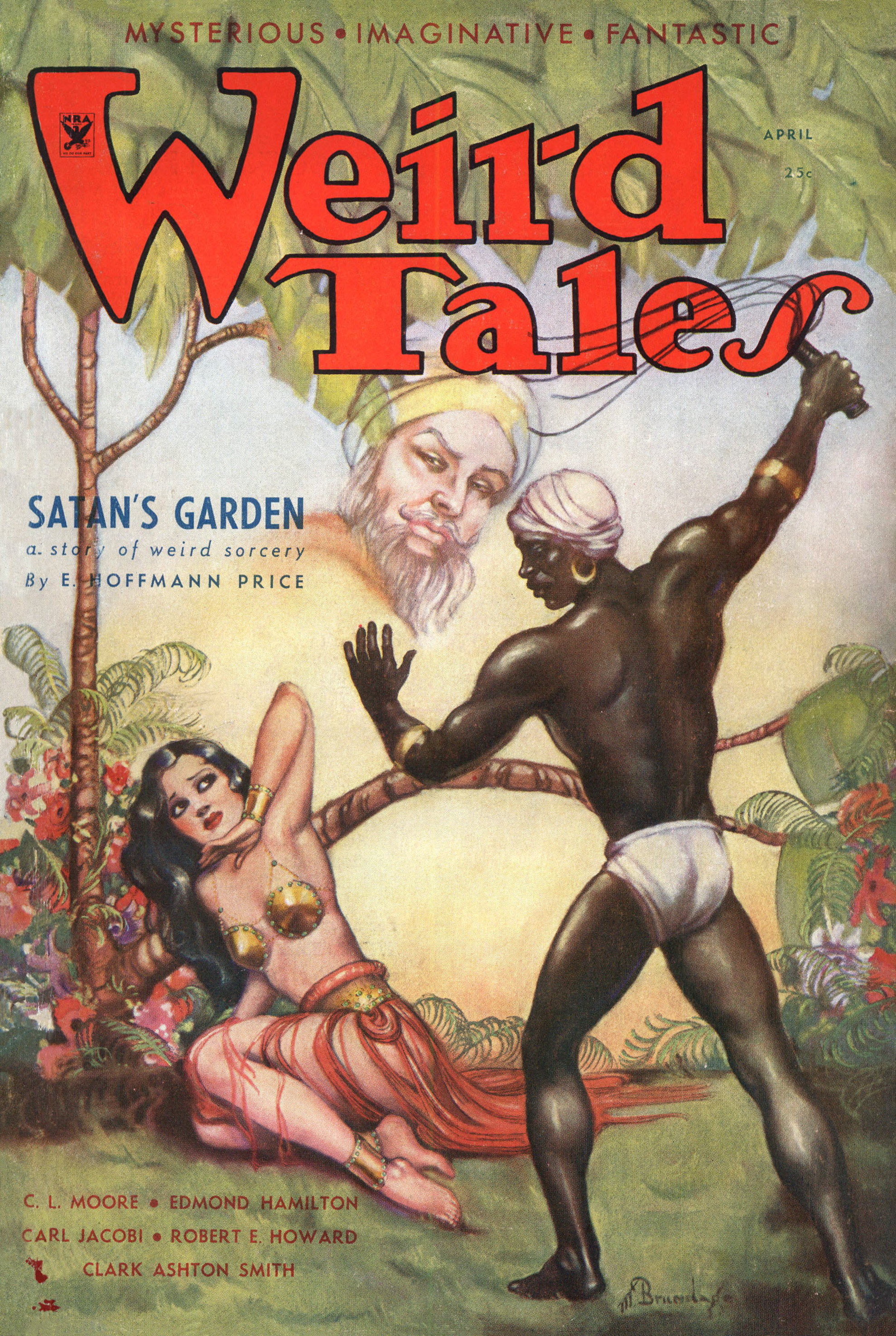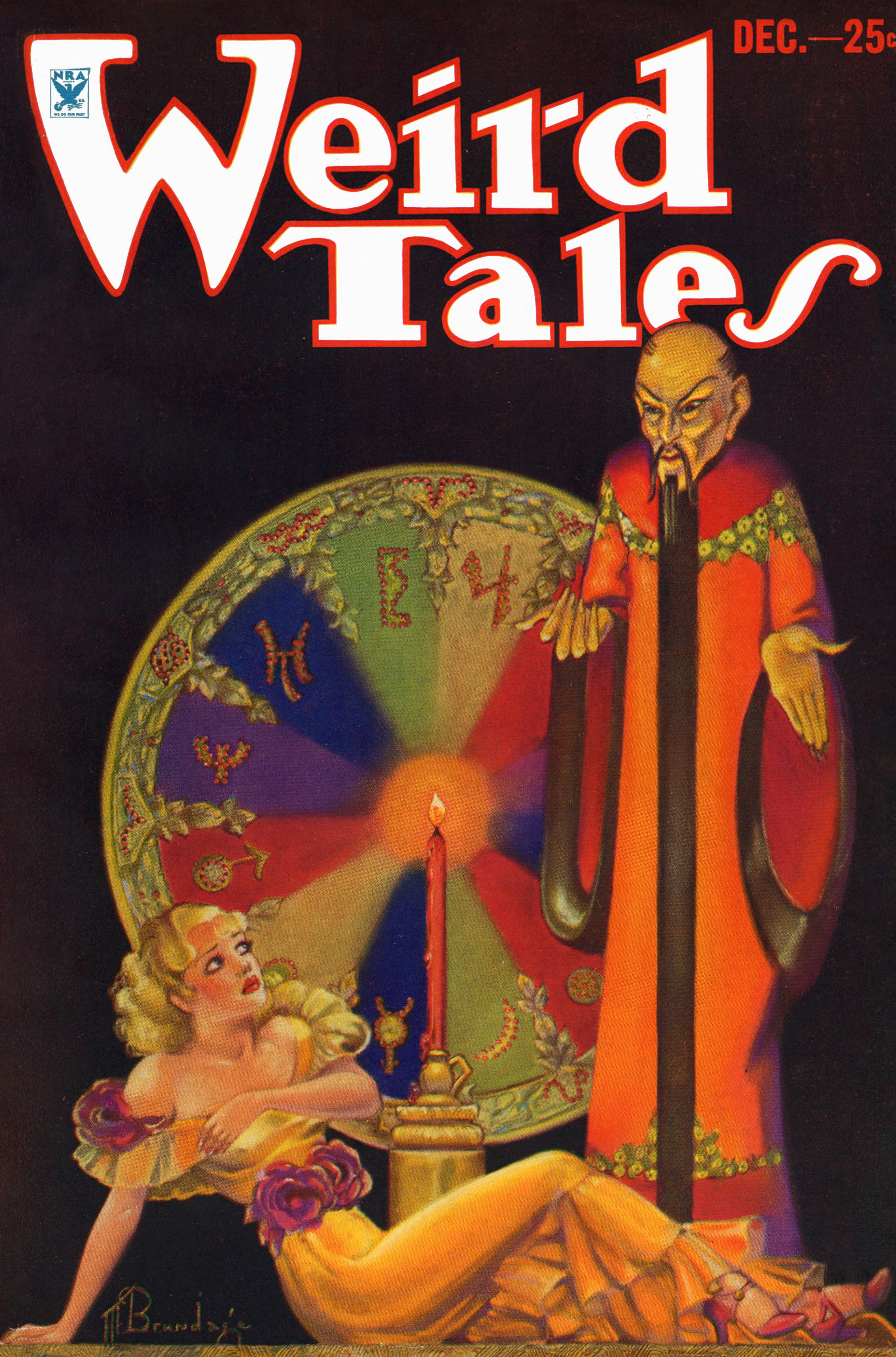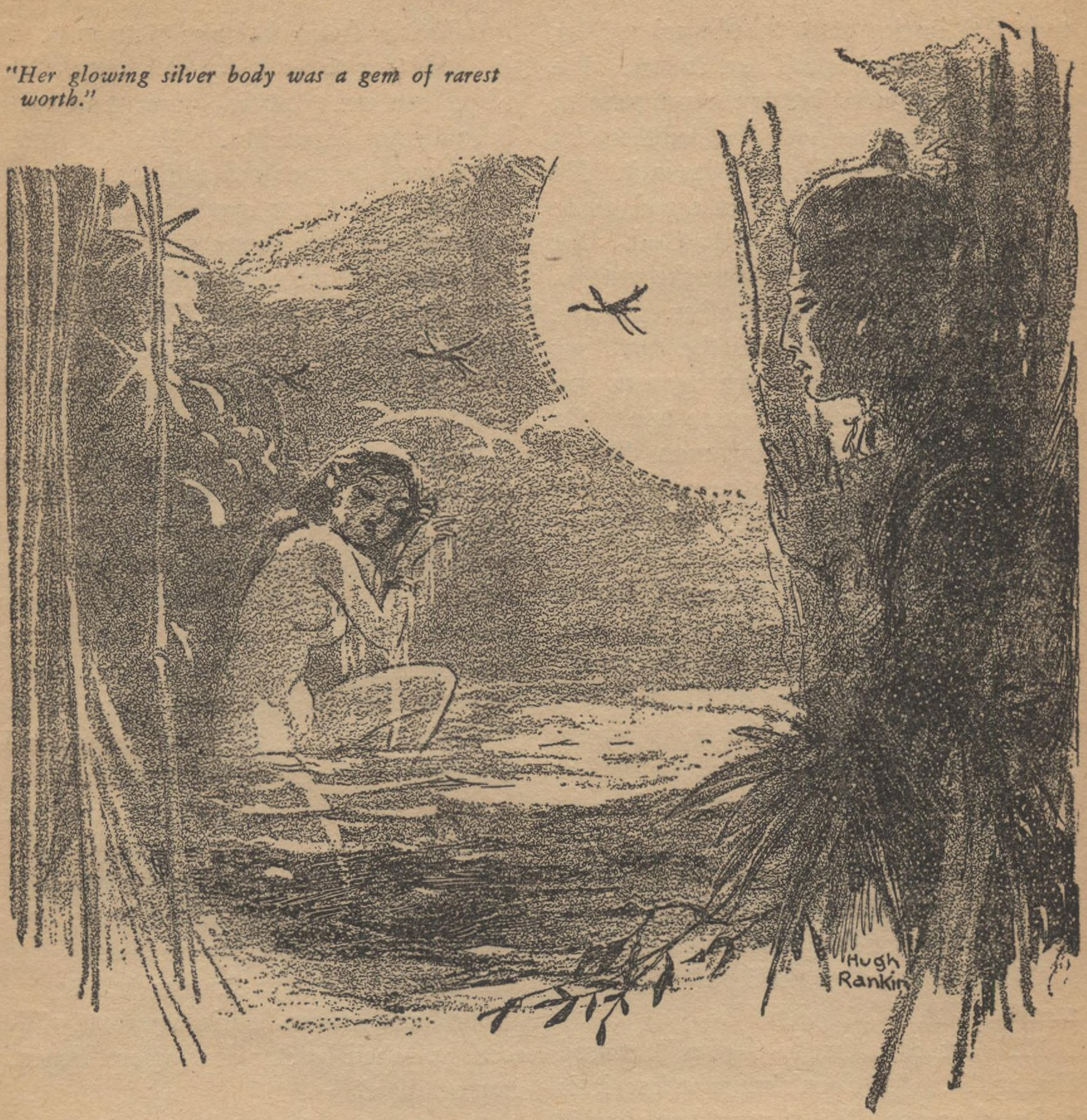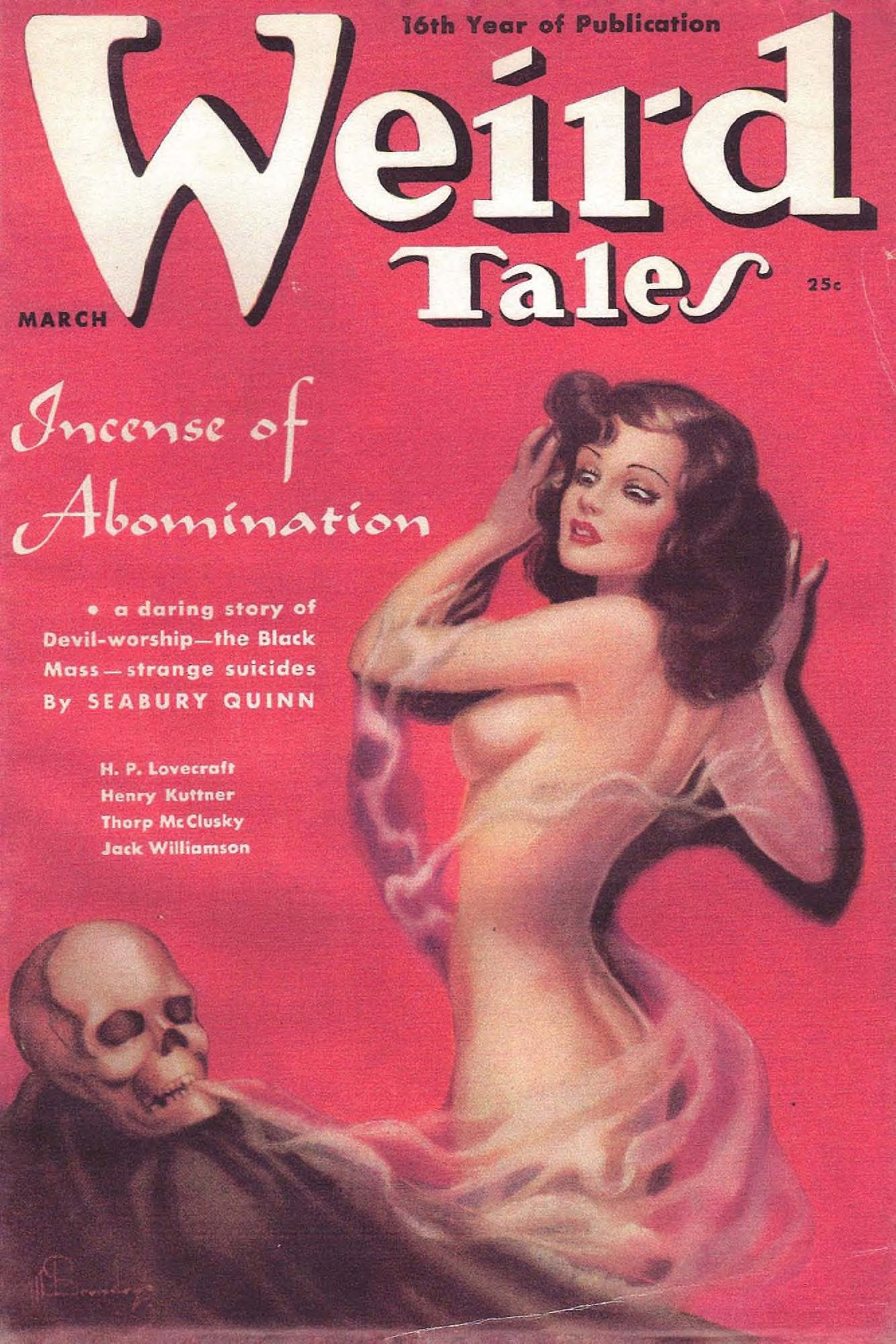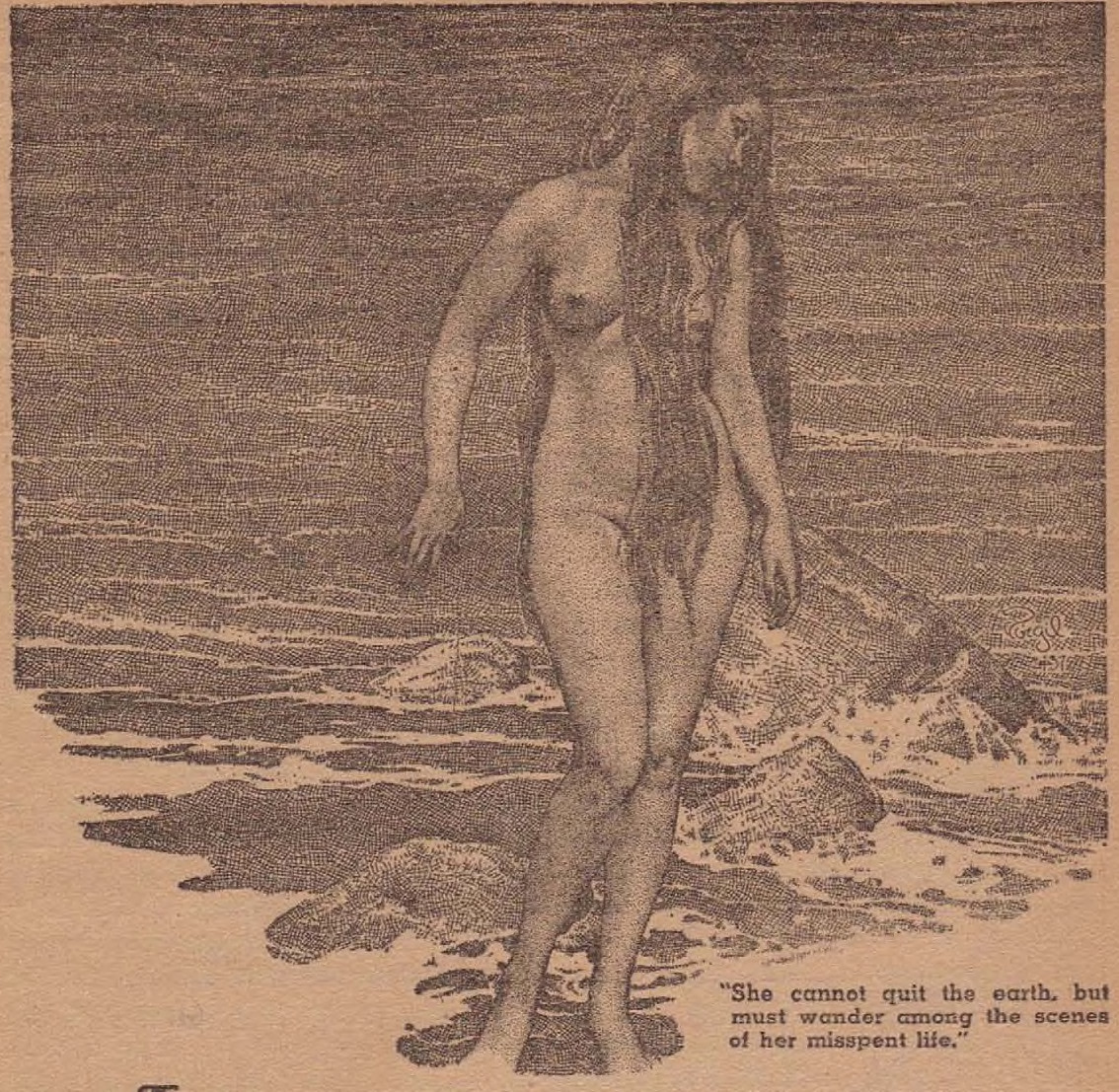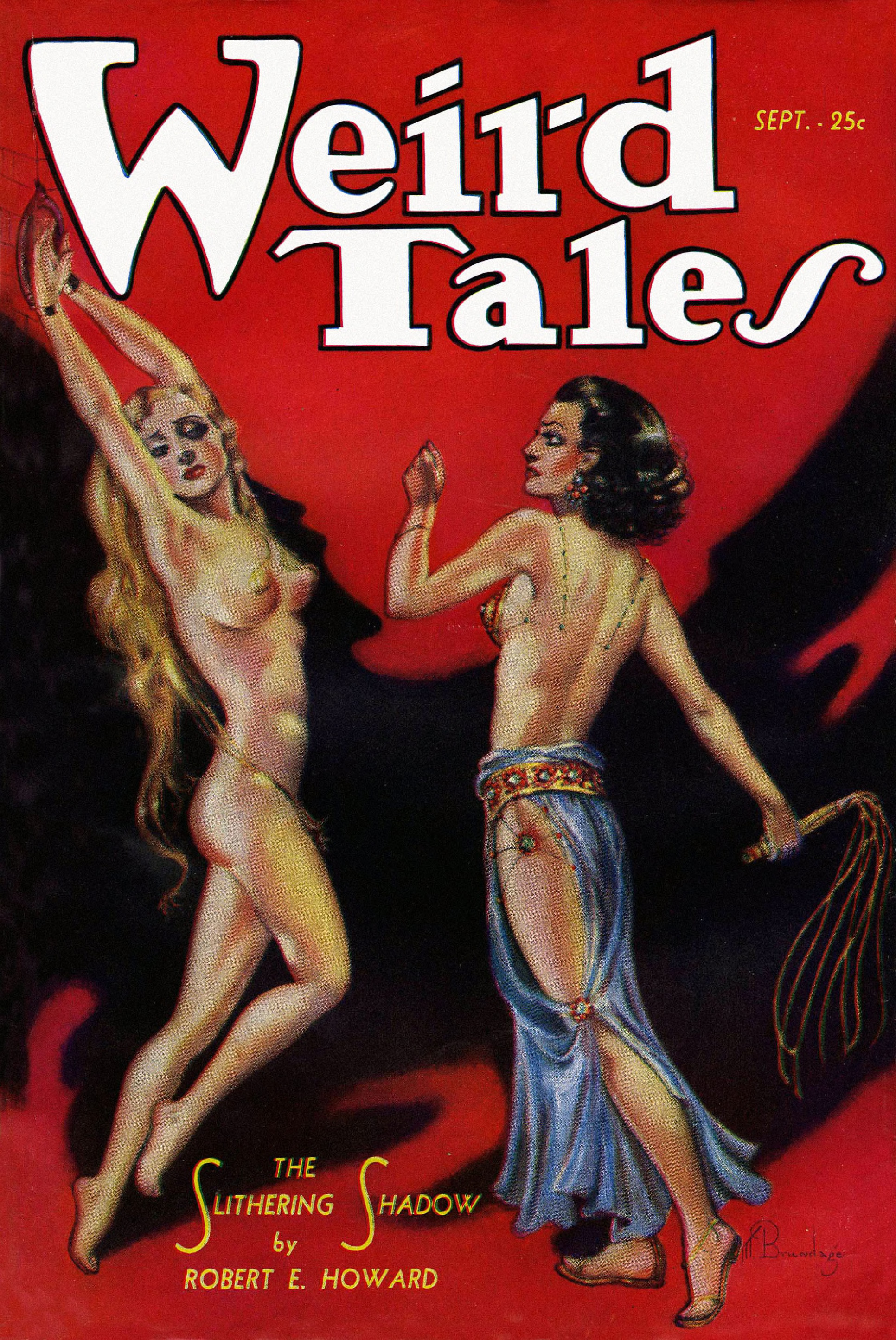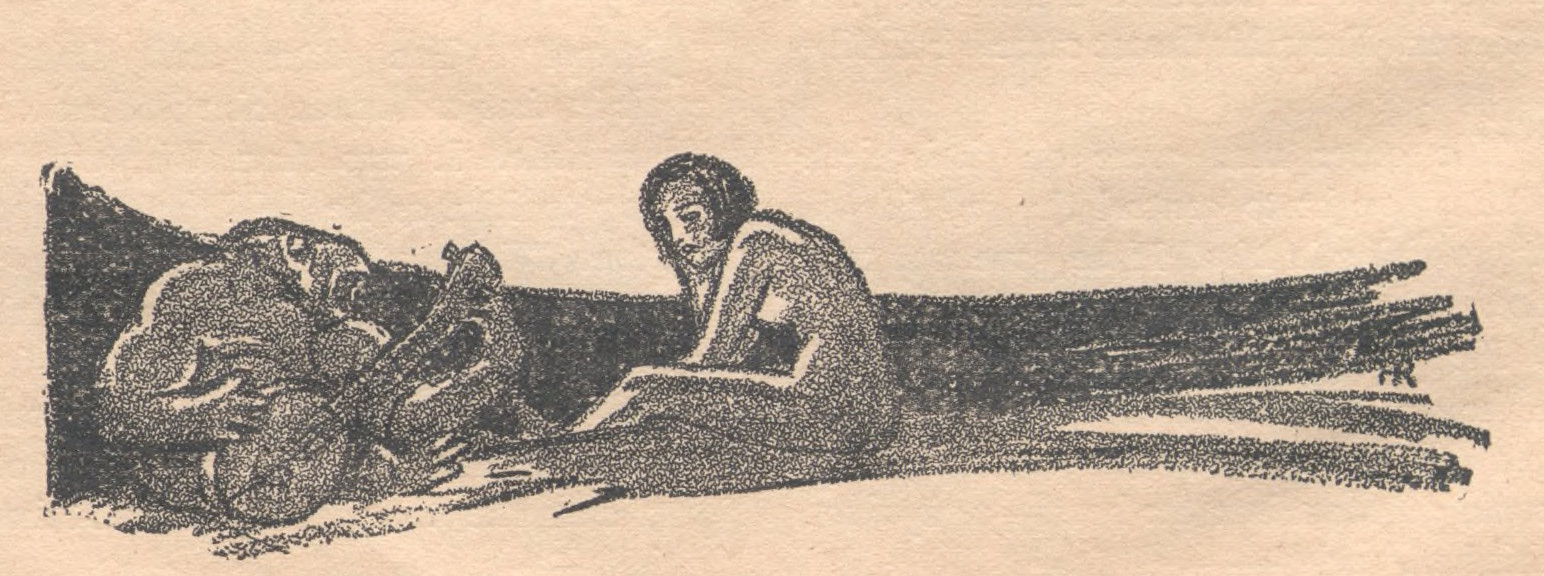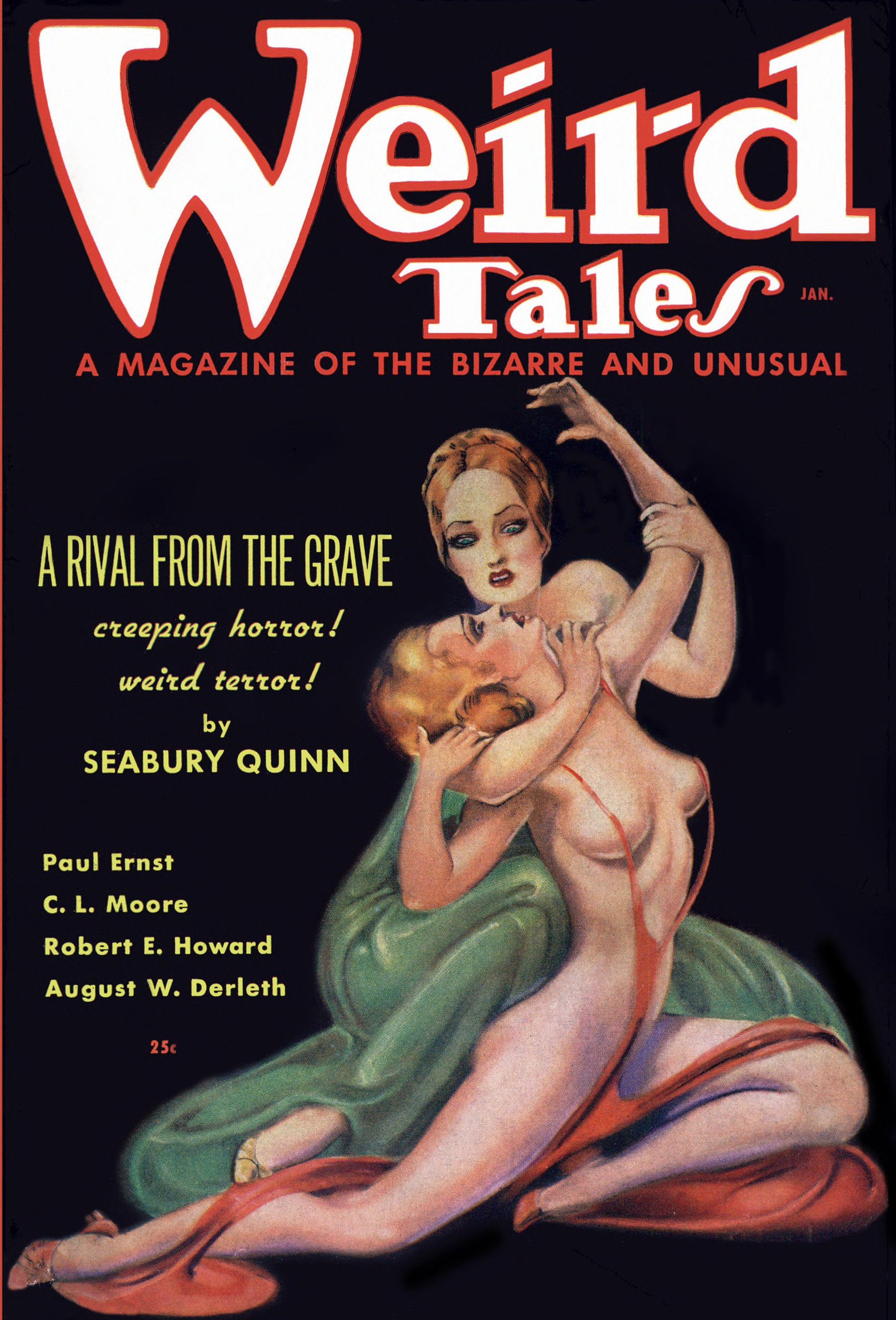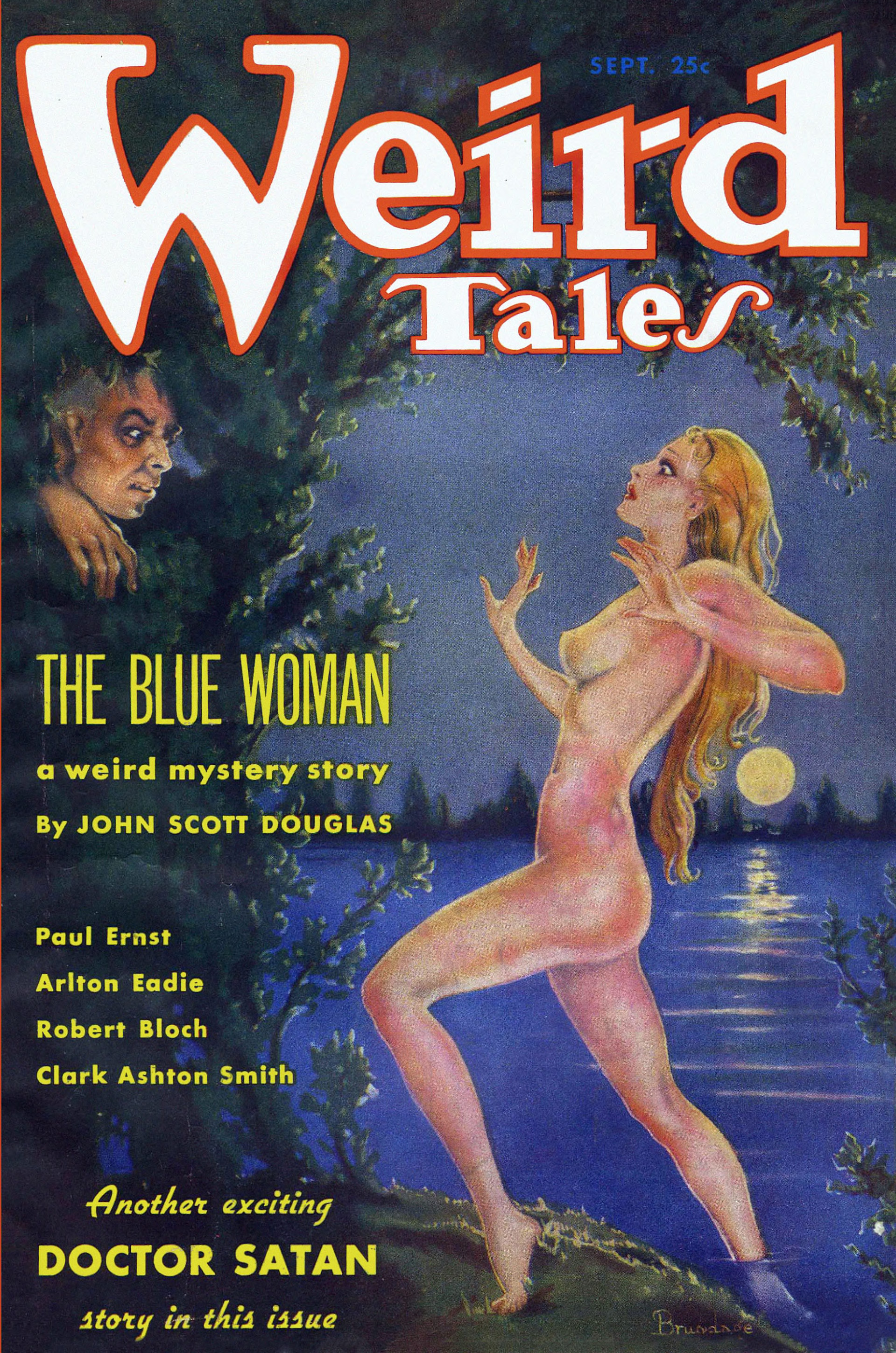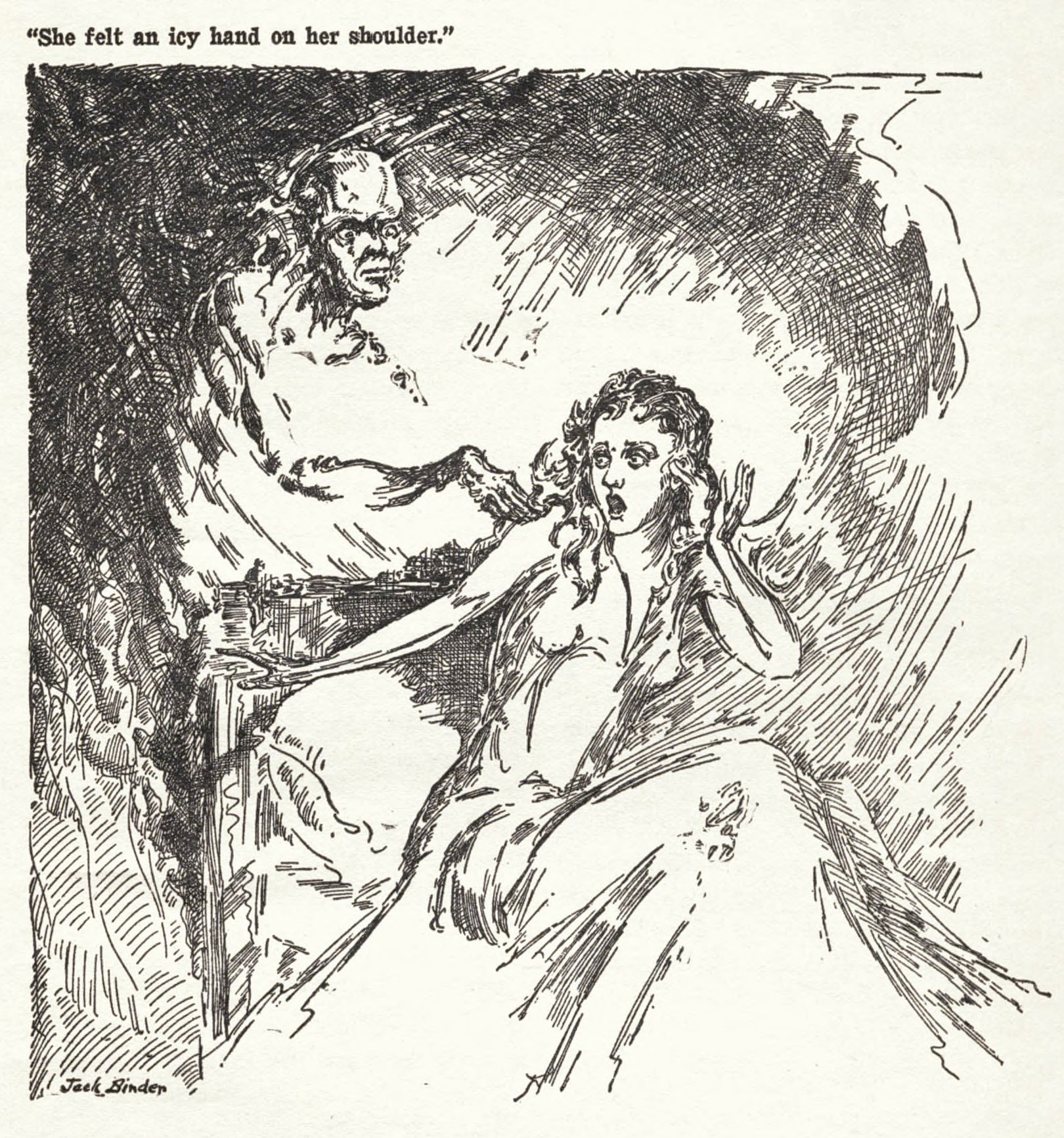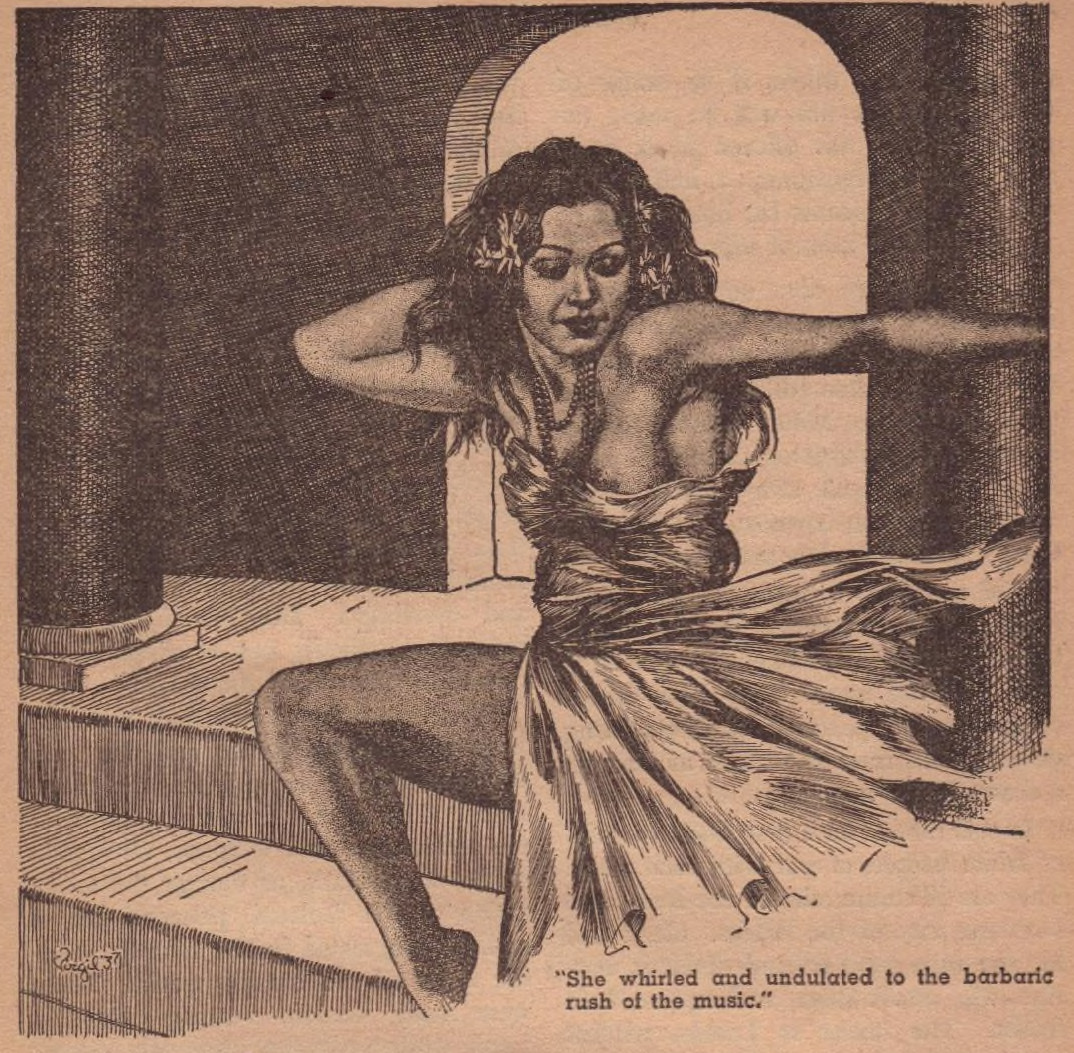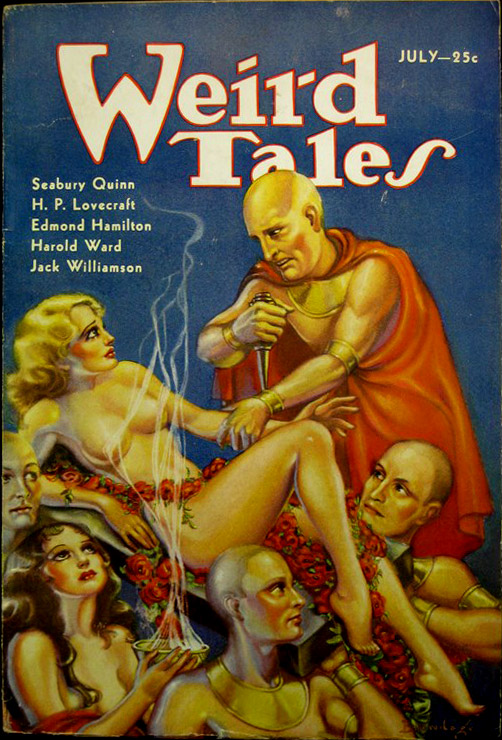Okay, so the racial not-so-subtext isn’t great, but at least we get to see Margaret Brundage at work on more kinky whipping, a subject for which it seems she has something of a feel. This April 1934 issue of Weird Tales has an early story by C.L. Moore among other pulp fiction luminaries.
The E. Hoffman Price story, “Satan’s Garden,” which I believe the Brundage cover also illustrates, has some tasty interior art by someone named H.R. Hammond, about whom I’m afraid I haven’t been able to find out very much at all.
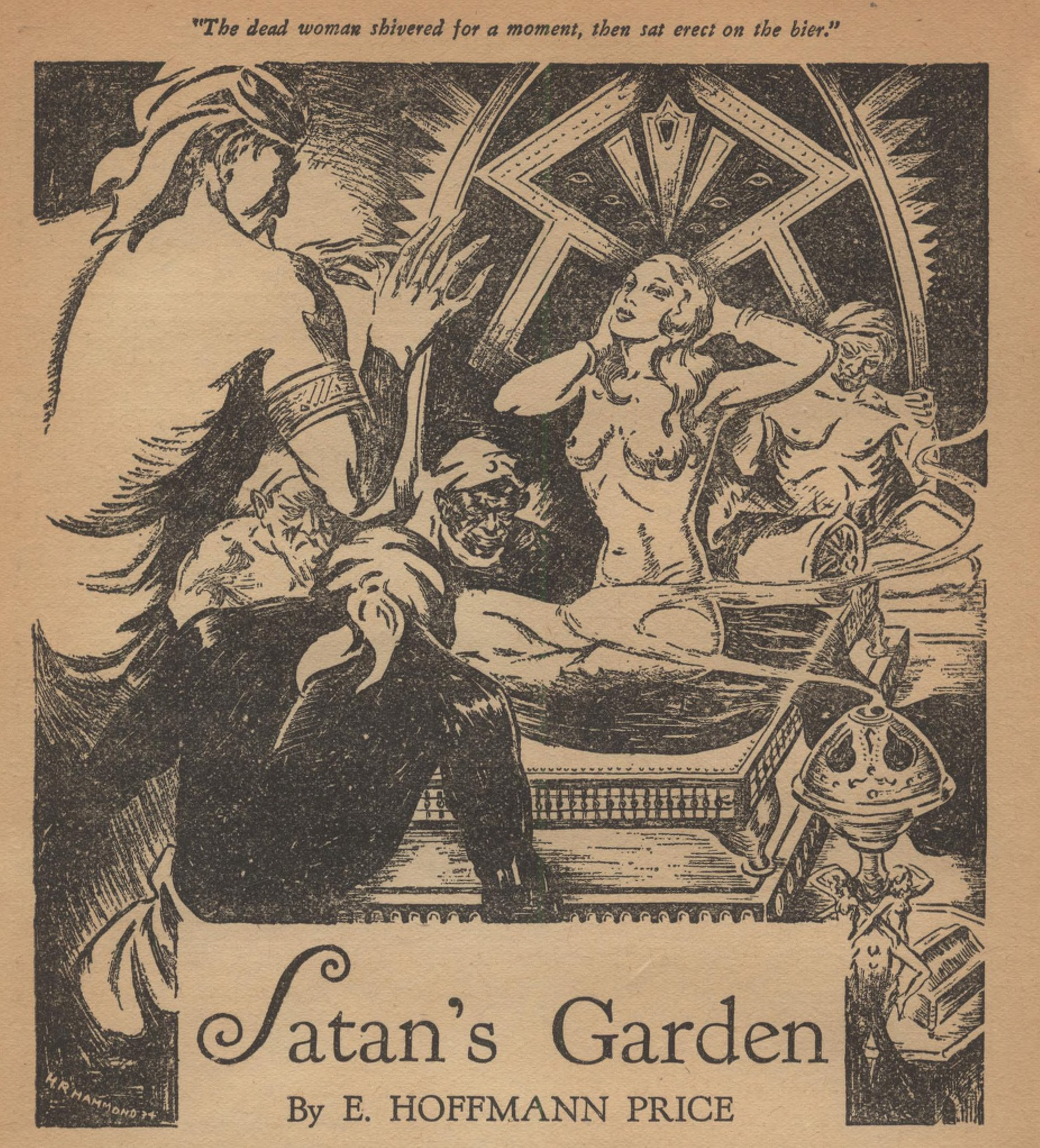
This issue of weird Tales is available to read or download from the Internet Archive.

